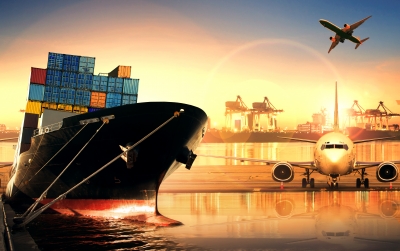By Amit Maheshwari
The Bureau of Customs (BOC) has taken notable strides toward digital transformation — from the E2M system to electronic payments and online clearance tools. Yet, the most significant shift now underway is not about automation alone but about intelligence: how artificial intelligence (AI) can transform trade compliance from a reactive process into a predictive one.
For decades, compliance in logistics and customs was driven by checklists — verifying forms, validating declarations, and ensuring duties matched goods. Automation made these steps faster. But as trade volumes grow and smuggling tactics become more sophisticated, static, rule-based systems are hitting their limits. The future lies in AI-driven risk management, where technology doesn’t just process data — it learns from it.
The Philippine Transition
In recent months, the BOC has been piloting advanced data analytics within its post-clearance audit and risk profiling units. The goal is to identify patterns of misdeclaration, undervaluation, and false classification — issues that cost the government billions annually.
Unlike earlier automation tools that rely on predefined red flags, these new systems use machine-learning models to detect irregularities based on historical data and behavioral trends. For example, an AI model can flag a shipment when its declared value sharply deviates from the average for similar goods or when an importer’s filing history shows inconsistent patterns.
It’s a promising shift, but challenges remain. The success of AI-enabled compliance depends heavily on data quality, system integration, and human interpretation. Many declarations are still filed through fragmented systems or via manual uploads, limiting the dataset that AI models can learn from. Moreover, without unified integration between customs, port systems, and logistics providers, risk profiling remains partial.
ASEAN’s Parallel Path
Across Southeast Asia, similar transformations are taking shape — and the Philippines’ experience mirrors a regional trend.
- Singapore has established an AI-based Trade Analytics Lab that uses predictive modeling to flag potential non-compliance before cargo arrives, integrating port, finance, and customs data in real time.
- Thailand is upgrading its Customs Intelligence Center to analyze trade transactions using AI and blockchain-secured data sharing.
- Vietnam has incorporated anomaly detection algorithms into its customs modernization program, focusing on risk-based inspections for high-volume importers.
ASEAN’s broader objective is to build interoperable digital trade corridors, where AI can analyze transactions across borders — spotting inconsistencies, duplicate declarations, or undervaluations as goods move from one country to another. In that context, the Philippines’ current pilots represent an early but crucial step toward regional alignment.
From Reactive to Predictive Compliance
The shift to AI represents more than a technological upgrade — it’s a redefinition of compliance itself. Traditional compliance responds to violations after they occur. Predictive compliance, powered by AI, anticipates risk before clearance. Instead of waiting for audit results, systems can guide importers and brokers toward accuracy at the time of filing. This prevents errors, reduces post-clearance disputes, and accelerates trade flow.
To realize this potential, three priorities stand out:
- Integrate data sources. Customs, port authorities, and logistics systems must share real-time data through secure APIs or blockchain frameworks.
- Improve data quality. Clean, structured data is the foundation of effective machine learning. Standardizing document formats and automating uploads will be key.
- Empower human oversight. AI doesn’t replace expertise; it enhances it. Training customs officers and brokers to interpret AI insights ensures balance between automation and accountability.
The Road Ahead
As ASEAN moves toward interconnected customs networks, the Philippines is well-positioned to lead — provided its modernization efforts continue beyond automation into intelligence. When risk management becomes predictive, and compliance becomes proactive, trade doesn’t just move faster — it moves smarter.
The next evolution of customs is not about more systems, but about smarter systems that understand context, learn from history, and act before mistakes happen. AI may not eliminate risk, but it can transform how nations — and their logistics industries — manage it.






